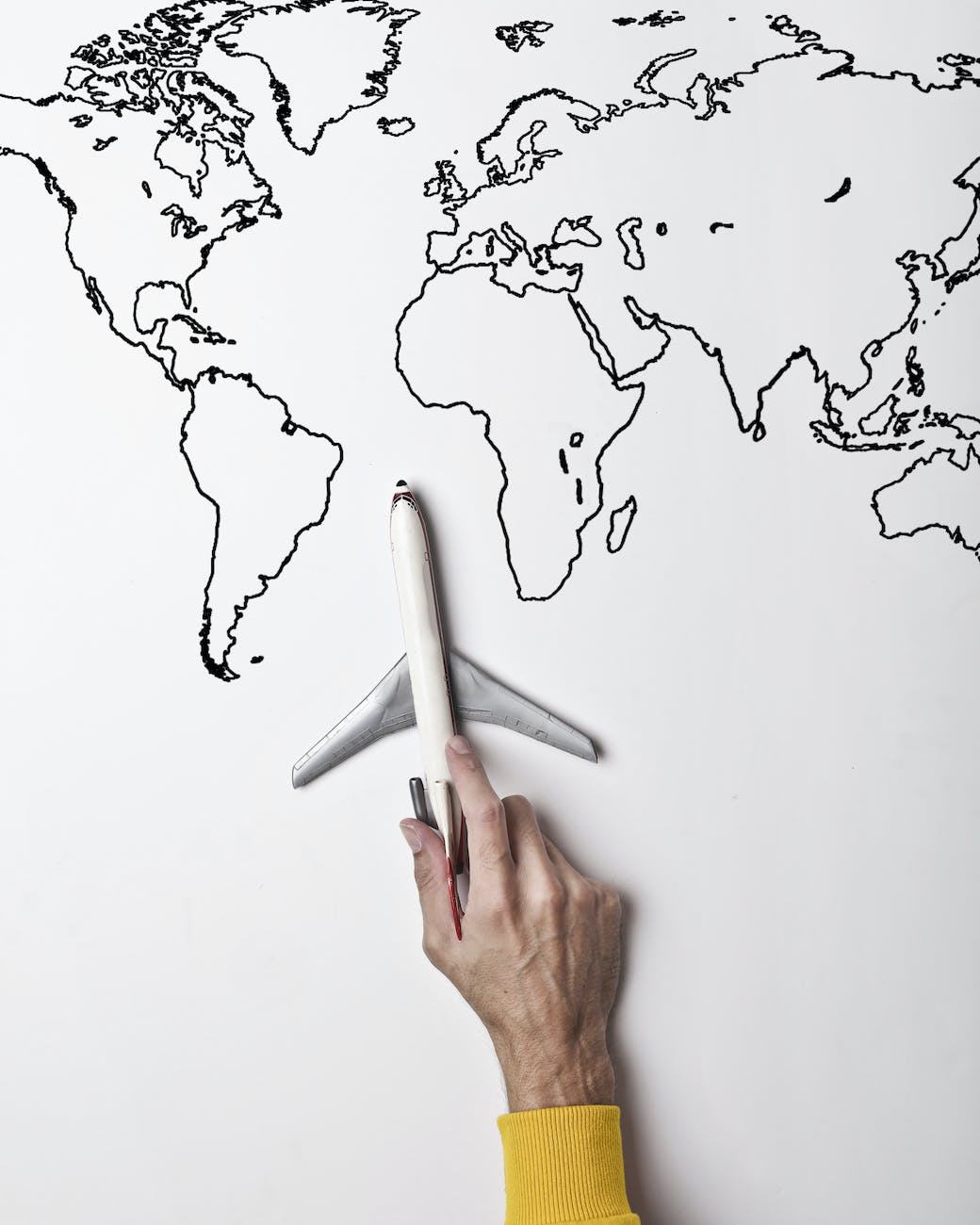Did you know that labor exploitation, including forced labour, is a global phenomenon affecting workplaces and regions worldwide? In today’s interconnected world, globalization has brought opportunities for economic growth but has also given rise to the exploitation of workers. The global economic system itself has become a breeding ground for labor abuse, including wage convergence. From international labor migration to domestic work and child labor, the consequences of labor exploitation are far-reaching.
Workers around the globe face exploitative practices, often subjected to low wages, hazardous conditions, and long working hours in the workplace. This dark reality of forced labour serves as a lesson and example of how our interconnectedness can lead to dire consequences for those seeking employment opportunities, especially in industries like industrial fishing. Labor exploitation is an issue that demands attention and action.
In this blog post, we will explore real-life stories and shed light on alarming statistics regarding worker exploitation in the global commerce of goods. We will discuss the urgent need for change and uncover the harsh realities behind the glimmering facade, with a focus on the role of technology.
Impact of globalization on labor conditions
Globalization has had a profound impact on labor conditions worldwide, including migrant workers. While it has brought about certain positive changes, such as wage convergence, it has also led to several negative consequences like worker exploitation. This article will delve into the effects of globalization on labor conditions, shedding light on the challenges faced by the global workforce, including seasonal workers.
Increased competition among countries in the era of globalization often triggers a race to the bottom in terms of labor standards. To remain competitive, some nations may compromise on worker rights and safety regulations, leading to deteriorating labor conditions for migrant workers and seasonal workers. This can result in long working hours, low wages, inadequate benefits, and poor workplace safety measures for employees, including instances of forced labour. These barriers further exacerbate the challenges faced by vulnerable workers.
Multinational corporations (MNCs) play a significant role in shaping labor conditions within their supply chains, especially in the context of migration and technology. In pursuit of cost-cutting measures, many MNCs outsource production to countries with lower wages and weaker labor protections, leading to convergence of labor forces. By doing so, they exploit the vulnerabilities of these nations’ labor forces while maximizing profits for themselves. Unfortunately, this outsourcing often perpetuates substandard working conditions and undermines workers’ rights in the US.
One major challenge posed by globalization is holding companies accountable for worker exploitation within their supply chains, especially when it comes to migrant workers and seasonal workers. Global supply chains, which involve technology and span multiple countries, make it difficult to trace responsibility for violations. The lack of transparency allows companies to evade accountability for poor working conditions and exploitative practices.
To address the challenges of wage convergence and fair labor standards, international organizations like the International Labor Organization (ILO) have been instrumental in promoting compliance globally. However, enforcing compliance with these standards remains challenging due to varying national regulations and limited resources, especially in the context of domestic work and migrant workers. The use of technology can help in improving enforcement efforts.
Given the rapid expansion of globalization, it is crucial for governments around the world to prioritize protecting workers’ rights and improving labor conditions. Strengthening domestic laws related to employment rights, wage convergence, safety regulations, and technology can help mitigate exploitation risks associated with increased global competition and migration.
Vulnerability of migrant workers in the global economy
Migrant workers, who form an integral part of the global economy, often find themselves in precarious situations that make them vulnerable to labor exploitation and lack protection. Their legal status, or lack thereof, exposes them to a range of abuses and injustices during migration. This can hinder wage convergence between migrant workers and those in advanced countries.
Precarious Legal Status
One significant factor contributing to the vulnerability of international labor migrants is their precarious legal status. Many migrants enter countries through irregular channels or on temporary visas, which leaves them susceptible to exploitation by unscrupulous employers. The fear of deportation often prevents these individuals from reporting abuse or seeking help, as they risk losing their livelihoods and being separated from their families. This lack of protection exacerbates the issue of child labor and further undermines the labor force.
Barriers and Discrimination
Language barriers and limited access to social services further compound the vulnerability of international labor migrants. In unfamiliar environments where communication can be a struggle, migrant workers may find it difficult to assert their rights or understand their employment contracts fully. Moreover, discrimination based on race, ethnicity, or nationality can lead to unequal treatment in the workplace and denial of essential protections against labor abuse, including child labor. These factors can also affect their wages.
Dangerous Working Conditions
Labor migration is a common phenomenon where migrants often fill positions in sectors known for labor abuse, such as agriculture, construction, domestic work, and manufacturing. These industries are notorious for exploiting workers, including child labor. These jobs are typically taken up by unskilled workers from less advanced countries who have limited alternatives and are willing to endure hazardous conditions for low wages.
Exploitation by Human Trafficking Networks
Human trafficking networks exploit vulnerable migrants during the process of migration, forcing them into situations of forced labor for low wages. These criminal organizations target individuals seeking better economic opportunities in advanced countries, but instead subject them to modern-day slavery. Migrants are often deceived with false promises or trapped through debt bondage schemes that take advantage of their desperation for employment and protection.
The vulnerability faced by migrant workers during migration is not confined to a specific region or set of countries. Developed nations, often reliant on migrant labor to sustain their economies and protect their wage, must address the systemic issues that perpetuate exploitation. Moreover, middle-class consumers in these countries should be aware of the potential labor abuses within global supply chains and demand greater transparency and accountability from corporations to protect los.
To protect labor migrants from exploitation, comprehensive measures are needed. Governments in advanced countries should enhance legal frameworks and enforcement mechanisms to safeguard the rights of migrant workers. This includes ensuring access to justice, prohibiting child labor, and establishing effective complaint mechanisms. Employers must also play their part by providing fair wages, safe working conditions, and respecting the dignity of all workers.
Root causes of forced labor and exploitation
Poverty and lack of economic opportunities drive individuals into exploitative work situations.
In the globalized world we live in, one of the root causes behind labor exploitation is poverty among migrant workers. Many migrant workers find themselves trapped in a cycle of poverty with limited access to education, healthcare, and basic necessities. As a result, they are forced to seek any means necessary to survive, often falling victim to exploitative work situations in advanced countries.
When individuals lack economic opportunities, they become vulnerable to unscrupulous employers who take advantage of their desperation. These employers offer low-paying jobs with long hours and hazardous conditions, leaving workers with no choice but to accept these exploitative terms. Poverty forces individuals into a corner where they have little bargaining power or ability to demand fair treatment, especially when it comes to child labor and labor migration. It is crucial to prioritize the protection of these vulnerable groups and address the issue of los, ensuring their rights are upheld.
Corruption within governments allows for the perpetuation of forced labor practices.
Another significant factor contributing to labor exploitation in globalization is corruption within governments. When those in power prioritize personal gain over the well-being of their citizens, it creates an environment conducive to forced labor practices, particularly among migrant workers. Corrupt officials may turn a blind eye or actively participate in illegal activities such as human trafficking or bonded labor, especially in advanced countries.
Corruption undermines efforts to combat worker exploitation, particularly among migrant workers, by weakening enforcement mechanisms and impeding the creation of effective legal frameworks. It allows unscrupulous employers and criminal networks involved in human trafficking, los que perpetuate the cycle of forced labor, to operate with impunity.
Discrimination based on gender, race, or ethnicity contributes to vulnerability towards exploitation.
Discrimination based on gender, race, ethnicity, and migrant worker status exacerbates the vulnerability of certain groups towards exploitation in advanced countries. Women and migrant workers often face additional challenges due to deeply ingrained gender inequalities present in many societies worldwide. They are frequently subjected to sexual harassment and abuse within workplaces that exploit them for cheap labor.
Similarly, racial and ethnic minorities, including migrant workers from other countries, may encounter discrimination that limits their access to fair employment opportunities. This discrimination not only restricts their chances for upward mobility but also exposes them to greater risks of exploitation and forced labor. Such systemic biases perpetuate the cycle of worker exploitation in globalization, particularly for those que los migrant workers.
Weak enforcement mechanisms and inadequate legal frameworks fail to protect workers’ rights.
Lastly, weak enforcement mechanisms and inadequate legal frameworks in certain countries contribute to the prevalence of forced labor practices. Even when laws exist to protect workers’ rights in these countries, they are often poorly enforced or lack sufficient penalties for violators. This creates an environment where employers can exploit workers in these countries without fear of facing consequences.
The absence of comprehensive legislation specifically targeting forced labor allows exploitative practices against migrant workers to persist in countries. Inadequate legal frameworks fail to address the complexities of modern-day labor exploitation, leaving los victims without adequate protection or avenues for seeking justice.
Solutions to address forced labor in a globalized world
Strengthening international regulations can help combat forced labor across borders.
In the face of labor exploitation in globalization, one crucial step towards eradicating forced labor is by strengthening international regulations. By establishing robust frameworks and guidelines, governments and organizations can work together to hold accountable those who engage in exploitative practices, especially towards migrant workers. These regulations should encompass various aspects such as fair wages, safe working conditions, and protection against human trafficking in different countries.
To effectively combat forced labor, advanced countries must take the lead in implementing and enforcing these regulations. They can set an example for other nations by demonstrating their commitment to ethical practices within their own borders. This includes ensuring that companies operating within their jurisdictions adhere to strict labor standards and face consequences if found guilty of exploiting workers.
Companies should adopt responsible sourcing practices that prioritize ethical treatment of workers throughout their supply chains.
One key solution to addressing labor exploitation in various countries lies in the hands of companies themselves. Businesses need to recognize their role in actively incorporating responsible sourcing practices into their operations. This means thoroughly vetting suppliers, conducting regular audits, and only engaging with those who demonstrate a commitment to fair treatment of workers in different countries.
To achieve this goal, companies can:
- Establish clear codes of conduct for suppliers that explicitly prohibit forced labor, especially in countries with high numbers of migrant workers. These codes should also address the specific challenges faced by domestic workers and ensure their safety and well-being. Additionally, companies should implement strict monitoring mechanisms to prevent any instances of forced labor and provide support services for those affected.
- Regularly monitor supplier compliance through independent third-party audits.
- Collaborate with NGOs, industry associations, and migrant workers to develop best practices for responsible sourcing.
- Provide training programs for employees involved in procurement, including migrant workers, to ensure they understand the importance of ethical sourcing and to prevent child labor in labor migration.
By prioritizing the well-being and dignity of workers throughout their supply chains, companies can contribute significantly to reducing instances of forced labor globally.
Empowering workers through education, organizing efforts, and access to legal support can help prevent exploitation.
Another critical aspect when tackling labor exploitation is empowering workers themselves. Education plays a vital role in informing individuals about their rights as employees and equipping them with knowledge on how to identify and report instances of exploitation. By partnering with local communities, NGOs, and educational institutions, companies can facilitate access to education programs that raise awareness about labor rights.
Furthermore, organizing efforts such as the formation of trade unions or worker associations provide a collective voice for employees in labor migration. These groups can advocate for fair treatment, negotiate better working conditions, and protect workers from exploitation and child labor. Companies should support these initiatives by respecting the freedom of association and providing a platform for workers to voice their concerns.
Access to legal support is also crucial in preventing labor exploitation. Companies can collaborate with legal aid organizations to ensure that workers have the means to seek justice when their rights are violated. By removing barriers to legal recourse, such as language barriers or lack of information, businesses can empower workers to challenge exploitative practices effectively.
Increasing transparency within supply chains enables consumers and stakeholders to make informed choices that support fair working conditions.
Transparency within supply chains is vital in combating forced labor, including the exploitation of migrant workers. It allows consumers and stakeholders to make informed choices that align with their values. When companies disclose information about their suppliers and manufacturing processes openly, individuals can assess whether ethical practices are being followed throughout the production chain, particularly in relation to migrant workers.
To enhance transparency:
- Companies should provide detailed information about each stage of their supply chains, including any involvement of migrant workers and any instances of child labor.
- Regular independent audits should be conducted to verify compliance with labor standards, especially for migrant workers.
- Clear labeling systems or certifications can help consumers identify products made under fair working conditions, free from child labor and involving migrant workers.
Examining inequality in global labor markets
Global labor markets are characterized by significant inequalities in wages, benefits, and working conditions. These disparities have far-reaching implications for workers around the world. Women and marginalized groups, in particular, face discrimination and lower pay compared to their counterparts.
The wage gap between genders, including migrant workers, is a prevalent issue within global labor markets. Despite progress made in recent years, women, including migrant workers, continue to earn less than men for performing the same job. This disparity stems from both explicit discrimination and implicit biases that undervalue women’s contributions, including those of migrant workers. As a result, women, including migrant workers, are often confined to lower-paying jobs and struggle to advance in their careers.
Similarly, marginalized groups such as racial minorities, migrant workers, and individuals from low-income countries experience unequal treatment in the labor market. Discrimination based on race, nationality, or migrant worker status can limit access to higher-paying jobs and opportunities for advancement. This perpetuates a cycle of poverty and restricts social mobility for these individuals.
Furthermore, the concentration of wealth among a few multinational corporations exacerbates inequality within the global labor market. These corporations hold significant power over wages, employment practices, and income distribution. They often exploit workers by paying them minimal wages while reaping substantial profits themselves. This concentration of power leaves workers with limited bargaining power to negotiate fair wages or improved working conditions.
Structural barriers also contribute to the persistence of inequality in global labor markets. Limited access to education and skills development programs hinders upward mobility for many workers. Without adequate training or qualifications, individuals are trapped in low-paying jobs with little opportunity for growth or advancement.
To address these issues, it is crucial to implement policies that promote wage convergence across different regions and industries within global labor markets. Governments should enforce fair employment practices that prohibit discrimination based on gender, race, or nationality. International organizations like the International Labour Organization (ILO) play a vital role in setting standards through various instruments aimed at protecting workers’ rights globally.
Efforts should also focus on improving income distribution within countries and reducing the concentration of wealth among multinational corporations to combat child labor. This can be achieved through progressive taxation policies, ensuring that the wealthy contribute their fair share to society. Governments should also invest in education and skills training programs to enhance workers’ qualifications and improve their chances of securing better-paying jobs, thus reducing child labor.
Balancing workers’ rights in a globalized trade system
Ensuring fair trade agreements include provisions that protect workers’ rights, including child labor, is crucial. In today’s interconnected world, international trade has become a driving force for economic growth and development. However, the pursuit of profit should not come at the expense of basic human rights, especially when it comes to child labor. It is essential to strike a balance between promoting global trade and safeguarding the well-being of workers, particularly children.
Collaborative efforts between governments, businesses, and civil society can help establish international labor standards. By working together, these stakeholders can create multilateral instruments that set clear guidelines for fair treatment of workers across borders. Such standards would ensure that trading partners are held accountable for upholding human rights in their respective countries.
Strengthening unions and collective bargaining power empowers workers to negotiate for better conditions, including addressing the issue of child labor. Unions play a vital role in protecting the interests of employees, advocating for their rights, and providing them with a platform to voice their concerns collectively, all while combating child labor. Through collective bargaining, workers can secure improved wages, safer working environments, and other benefits that contribute to their overall well-being and help eradicate child labor.
Promoting responsible investment practices encourages companies to prioritize human rights alongside profit. Firms seeking opportunities in foreign markets must be mindful of the impact their operations have on local communities and workers. By adhering to ethical business practices, companies can demonstrate their commitment to upholding labor rights while still reaping the benefits of globalization.
While free trade brings numerous advantages such as increased market access and economic growth, it also presents challenges for migrant workers. Many countries with lax labor laws may attract investments from firms seeking lower production costs but fail to provide adequate safeguards for the welfare of these vulnerable employees. This creates an imbalance where some parties benefit at the expense of migrant workers.
To address child labor and other related issues effectively, international trade agreements should explicitly incorporate provisions that protect workers’ rights.
- Safety nets: Agreements should require participating countries to establish safety nets that provide social protection for workers, ensuring they have access to healthcare, education, and other essential services.
- Enforceable labor laws: Trade agreements should include mechanisms to ensure that participating countries enforce their labor laws effectively. This can be achieved through regular monitoring and reporting on compliance.
- Capacity building: Assistance programs should be in place to help developing countries strengthen their legal frameworks and institutions related to workers’ rights. This support would enable them to implement and enforce labor standards more effectively.
- Transparency: Agreements should promote transparency by requiring participating countries to disclose information about working conditions, wages, and other relevant factors that impact worker well-being.
By incorporating these provisions into trade agreements, we can create a more balanced global trade system that respects the rights of workers while fostering economic growth. It is essential for all stakeholders involved in international trade to recognize the importance of prioritizing human rights alongside profit-making endeavors. Only through collective action can we achieve a fairer and more equitable global trading environment where no worker is exploited or left behind.
Reflecting on labor exploitation in globalization
In conclusion, labor exploitation in globalization is a pressing issue that requires immediate attention. The impact of globalization on labor conditions has led to the widespread mistreatment and abuse of workers worldwide. Migrant workers, in particular, are highly vulnerable in the global economy, facing numerous challenges and risks.
Forced labor and exploitation, particularly among migrant workers, have deep-rooted causes that must be addressed. Factors such as poverty, lack of regulation, and unethical business practices contribute to this problem. It is essential to identify these root causes and work towards eradicating them to ensure fair and just working conditions for all, including migrant workers.
To combat forced labor in a globalized world, governments, businesses, and civil society must collaborate to establish stronger regulations and enforcement mechanisms. Companies should prioritize ethical sourcing practices and ensure their supply chains are free from exploitation, especially when it comes to the treatment of migrant workers.
Examining inequality in global labor markets is crucial for understanding the extent of the problem. Disparities between wages, working conditions, and opportunities hinder progress towards fair treatment for all workers. Addressing these inequalities requires systemic changes at both national and international levels.
Balancing workers’ rights within a globalized trade system is a complex task but an essential one. Trade policies should prioritize human rights over profit margins. This can be achieved by incorporating social clauses into trade agreements that protect workers’ rights and prevent exploitation.
It is important for individuals to be aware of their role as consumers in shaping labor conditions globally, especially for migrant workers. By supporting companies with transparent supply chains and ethical practices that benefit migrant workers, we can contribute to positive change. Demand for products made under fair conditions for migrant workers will incentivize businesses to improve their practices.
In conclusion, addressing labor exploitation in globalization requires collective action from governments, businesses, civil society organizations, individuals like you, and migrant workers. Together we can create a world where every worker, including migrant workers, is treated with dignity and respect.
FAQs
What are some examples of labor exploitation in globalization?
Examples of labor exploitation in globalization include sweatshop conditions, child labor, forced labor, and human trafficking for migrant workers in industries such as agriculture and manufacturing.
How does labor exploitation affect workers’ lives?
Labor exploitation has severe consequences on workers’ physical and mental well-being. It can lead to poor working conditions, long hours, low wages, limited access to healthcare and education, and a cycle of poverty.
What role do multinational corporations play in labor exploitation?
Multinational corporations have a significant influence on global supply chains, including those involving migrant workers. Some corporations may prioritize profit over the welfare of these workers, leading to exploitative practices such as subcontracting to factories with poor working conditions or engaging in forced labor.
How can consumers contribute to combating labor exploitation?
Consumers can make informed choices by supporting businesses that prioritize fair trade practices and ethical sourcing for migrant workers. By demanding transparency from companies about their supply chains and boycotting products associated with labor exploitation of migrant workers, consumers can influence change.
What are some initiatives addressing labor exploitation globally?
Initiatives such as the International Labour Organization (ILO) work towards promoting decent work for all. The Fair Trade movement aims to ensure fair prices and better working conditions for producers in developing countries. NGOs also play a crucial role through advocacy, research, and support for affected workers.



